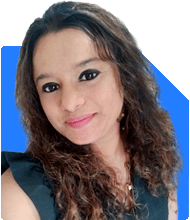Ramalingam Kalirajan |10899 Answers |Ask -Follow
Mutual Funds, Financial Planning Expert - Answered on Jun 19, 2024
He has an MBA in finance from the University of Madras and is a certified financial planner.
He is the director and chief financial planner at Holistic Investment, a Chennai-based firm that offers financial planning and wealth management advice.... more

Hi, I am 34 years old married and have one kid 1 year of age. I have invested about 1.8 lakhs in mutual funds which currently stands at 2.05 lakhs. I have a PPF savings of 10 lakhs and invest full amount of 1.5 lakhs per year. I have invested 2 lakhs in equities. I have FDs worth 30 lakhs and my salary is 1.10 lakhs. I wish to retire by 40 years of age. Kindly me suggest me.
Mutual Funds Investment
Your mutual funds have grown from Rs 1.8 lakhs to Rs 2.05 lakhs. This indicates a healthy appreciation.
However, to retire early, you need to increase your investment in mutual funds.
Actively managed mutual funds could be a better choice compared to index funds. Actively managed funds often outperform the market due to professional fund management. They can adapt to market changes quickly and optimize your returns.
Consider investing through a certified financial planner who can guide you on the best mutual funds. They can provide personalized advice and help you achieve your retirement goals.
Public Provident Fund (PPF)
Your PPF savings stand at Rs 10 lakhs, and you are investing the full amount of Rs 1.5 lakhs per year.
PPF is a great investment for tax-saving and securing your future. It offers a stable and assured return, which is crucial for your retirement plan.
Continue with your current PPF contributions. This will create a significant corpus by the time you retire. Given the tax benefits and guaranteed returns, PPF is a robust component of your retirement plan.
Equities Investment
Your investment in equities is Rs 2 lakhs. Equities can provide high returns, but they come with higher risks.
For early retirement, you need a balanced approach in your equity investments. Diversify your equity portfolio to mitigate risks. Invest in blue-chip stocks and sectors with strong growth potential.
Regularly review and adjust your equity portfolio with the help of a certified financial planner. This ensures that you are on track with your financial goals and minimizes potential risks.
Fixed Deposits (FDs)
You have FDs worth Rs 30 lakhs, which is substantial. FDs are safe investments but offer lower returns compared to mutual funds and equities.
Since you wish to retire early, it's essential to balance safety and growth. While FDs provide safety, they might not generate the necessary returns for early retirement.
Consider reallocating a portion of your FDs into higher-yield investments like mutual funds and equities. This can enhance your overall returns while maintaining some level of safety in your investments.
Monthly Salary
Your monthly salary is Rs 1.10 lakhs. It is crucial to allocate a portion of your salary towards investments.
Follow the 50-30-20 rule:
50% for necessities
30% for discretionary spending
20% for investments
This ensures a disciplined approach to saving and investing, helping you build a retirement corpus.
Setting a Retirement Corpus
To retire by 40, estimate your retirement corpus based on current expenses, inflation, and lifestyle aspirations. This will give you a clear target to aim for.
Consult a certified financial planner to help you set realistic financial goals and create a roadmap to achieve them. They can provide insights into how much you need to save and where to invest.
Increasing Investments
To achieve early retirement, increase your investments gradually. Allocate more towards high-growth avenues like mutual funds and equities.
Systematic Investment Plans (SIPs) are a great way to invest in mutual funds. They provide the benefit of rupee cost averaging and disciplined investing.
Evaluate and adjust your investments regularly to stay aligned with your goals.
Risk Management
Early retirement requires careful risk management. While investing in high-return avenues, ensure you have adequate insurance coverage.
Life insurance, health insurance, and critical illness cover are essential. They protect your financial plan against unforeseen events.
Review your insurance policies regularly and make adjustments as needed.
Emergency Fund
An emergency fund is crucial for financial security. Aim to have 6-12 months' worth of expenses in a liquid fund.
This provides a safety net for any unexpected expenses and ensures you don’t need to dip into your retirement savings.
Tax Planning
Efficient tax planning can boost your savings. Utilize tax-saving instruments like PPF, EPF, and ELSS.
Maximize your tax deductions under Section 80C, 80D, and other relevant sections. This increases your investable surplus and helps in faster wealth accumulation.
Lifestyle and Spending Habits
Retiring early requires a frugal lifestyle and disciplined spending habits.
Evaluate your discretionary expenses and identify areas where you can save more. Redirect these savings into your investment portfolio.
Small changes in spending habits can have a significant impact on your savings and investments over time.
Regular Financial Review
Regularly review your financial plan and investment portfolio.
Market conditions and personal circumstances change over time. A certified financial planner can help you navigate these changes and keep your plan on track.
Periodic reviews ensure that you are progressing towards your retirement goal and allow for timely adjustments.
Benefits of Professional Guidance
Working with a certified financial planner offers several advantages. They provide personalized advice, keeping your goals and risk tolerance in mind.
They help you create a diversified investment portfolio, optimize tax savings, and manage risks effectively. Their expertise can significantly enhance your chances of achieving early retirement.
Final Insights
Your goal of retiring by 40 is ambitious but achievable with a strategic approach.
Focus on increasing your investments in high-growth avenues like mutual funds and equities. Maintain a balance between safety and growth by reallocating your FDs.
Continue your disciplined approach towards PPF and ensure you have adequate insurance coverage. Build a robust emergency fund and practice efficient tax planning.
Adopt a frugal lifestyle and disciplined spending habits to maximize your savings. Regularly review your financial plan with the help of a certified financial planner.
Your dedication and disciplined approach are commendable. With strategic planning and professional guidance, you can achieve your dream of early retirement.
Best Regards,
K. Ramalingam, MBA, CFP,
Chief Financial Planner,
www.holisticinvestment.in
Best Regards,
K. Ramalingam, MBA, CFP,
Chief Financial Planner,
www.holisticinvestment.in
You may like to see similar questions and answers below
Ramalingam Kalirajan |10899 Answers |Ask -Follow
Mutual Funds, Financial Planning Expert - Answered on May 25, 2024
Jinal Mehta | Answer |Ask -Follow
Financial Planner - Answered on Jun 17, 2024
Ramalingam Kalirajan |10899 Answers |Ask -Follow
Mutual Funds, Financial Planning Expert - Answered on Jul 17, 2024
Ramalingam Kalirajan |10899 Answers |Ask -Follow
Mutual Funds, Financial Planning Expert - Answered on Sep 11, 2025
Ramalingam Kalirajan |10899 Answers |Ask -Follow
Mutual Funds, Financial Planning Expert - Answered on Dec 17, 2025
Ramalingam Kalirajan |10899 Answers |Ask -Follow
Mutual Funds, Financial Planning Expert - Answered on Dec 17, 2025
Ramalingam Kalirajan |10899 Answers |Ask -Follow
Mutual Funds, Financial Planning Expert - Answered on Dec 17, 2025
Ramalingam Kalirajan |10899 Answers |Ask -Follow
Mutual Funds, Financial Planning Expert - Answered on Dec 17, 2025
Ramalingam Kalirajan |10899 Answers |Ask -Follow
Mutual Funds, Financial Planning Expert - Answered on Dec 17, 2025
Mayank Chandel |2576 Answers |Ask -Follow
IIT-JEE, NEET-UG, SAT, CLAT, CA, CS Exam Expert - Answered on Dec 17, 2025
Radheshyam Zanwar |6747 Answers |Ask -Follow
MHT-CET, IIT-JEE, NEET-UG Expert - Answered on Dec 16, 2025
Shalini Singh |181 Answers |Ask -Follow
Dating Coach - Answered on Dec 16, 2025
Patrick Dsouza |1429 Answers |Ask -Follow
CAT, XAT, CMAT, CET Expert - Answered on Dec 16, 2025
Nayagam P P |10858 Answers |Ask -Follow
Career Counsellor - Answered on Dec 16, 2025

























